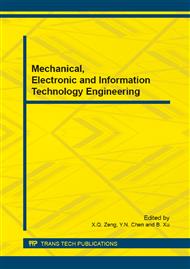p.445
p.450
p.458
p.463
p.467
p.471
p.474
p.479
p.484
Passing Ability Impact Factors Simulation of Articulated Vehicle with 6×4 Tractor
Abstract:
Passing ability of articulated vehicles is analyzed, which are combined of different 6×4 tractors and different semitrailers. According to the requirements of GB 1589, the passing ability of different structure articulated vehicles are simulated using AutoTURN. In order to analyze the passing ability impact factor of articulated vehicles in type and structure, simulation analysis is used to study how the tractor front overhang, the distance between center of tractor fifth wheel and the tractor first axle, and the semitrailer first wheel space impact on the passing ability. Reasonable suggestions are proposed by analyzing how the changes of parameters impact on the passing ability. The validity of the simulation model is validated by the test. The results serve as a useful reference for optimizing the articulated vehicle passing ability and promoting the development of vehicle industry technology.
Info:
Periodical:
Pages:
467-470
Citation:
Online since:
March 2015
Authors:
Price:
Сopyright:
© 2015 Trans Tech Publications Ltd. All Rights Reserved
Share:
Citation:


